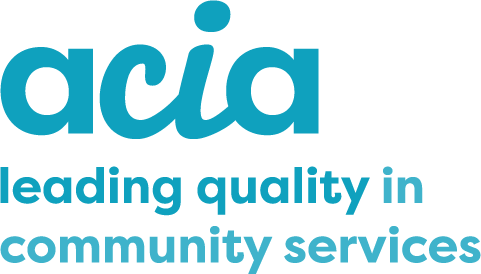Disasters and emergencies
For Participant related hazards possible risk factors are listed below.
For these risk factors there are things you can consider in order to minimise the risk.
There are also Referral Pathwayconsiderations.
This is not an exhaustive list. It is a tool to give you ideas that you might want to explore.
Risk factors |
Considerations |
Individual/Participant
- Impaired cognitive/decision making capacity
- Sensory impairment (vision or hearing loss, loss of sense, touch, taste, smell)
- Physical impairment (loss of movement)
- Inability of resident to react to fire or smoke alarm actuating due to mobility difficulties or decision making difficulties (e.g. dementia or hoarding)
- History of falls
- Alcohol/drug use
- Frequent changes to staffing/roster
- Careless with smoking and smoking materials/Smoker
- Careless with cooking practices/Cooking practices
- Unsafe use of electrical equipment e.g. overloaded power boards, unsafe use of heaters i.e. too close to flammable materials or water
- Medium to high fire risk and evidence of fire risk behaviours such as careless disposal of cigarettes, signs of cooking being left on or other high risk of fire
- Medical oxygen user
- Support equipment dependency/physical impairment of Participant
- Essential support equipment powered by battery/electricity
- Isolated Participant (no carer/family OR geographically isolated OR frequent changes to other staff )
- Refusal by Participant to be re-located
- Likely evacuation delays e.g. Getting Participant out of bed and house due to need of two workers, hoists or other equipment or support needs
External:
- Weather conditions/fire danger rating
- Bushfire zone
- Bushfire zone/ property overgrown
- Flood zone / frequency of storms/floods in the area
- High level of vegetation
- Susceptible to power outages
- Previous files within range of threat to safety given Participant’s preparation and evacuation needs
- Severe storm warning/history of storms/tropical cyclones, flooding or tsunami
- Accessibility (of/at Participant’s property or accessing community) for Participant, Support Worker or other service
- Pets
- Neighbourhood (people risk as opposed to natural risk)
Internal
- History of residential fires at Participant's home
- Burns on carpets, furniture, and clothes
- Damaged wiring or high load on power boards within the home
- The home is vulnerable to bushfire, flooding, high winds.
- Hoarding/Clutter
- Use of open flames (including candles, incense, oil burners and fireplaces)
- Annual testing of or no working smoke alarm
- Other residents (many residents; residents who impact on risk factors) and pets
- Biological hazards e.g. blood or other products of living things that may cause illness or disease in humans
- Chemical hazards
- Unexpected power blackout
- Necessary support equipment (including equipment requiring power supply)
- Accessibility for Participant, Support Worker or other service
|
General considerations
Flood
- ‘Get storm ready’ be prepared for power blackouts; inaccessible supplies (including food and water).
- Have generator and/ or other back up power where possible.
- Complete Home emergency plan and kit, including the establishment of a support team, the development of a communication system.
- Evacuate when possible.
- Advise SES of location if stranded within home.
Bushfire
- Complete bushfire survival plan
- Evacuate the property/’leave early’
- Have home/yard, particularly in warmer months cleared and organised for the event of a bushfire
- Register with AIDER (Assist Infirm, Disabled and Elderly Resident) program.
- Bushfires behave differently depending on the nature of the fire, wind speed and direction, etc. Pre-planning via a risk assessment is in order.
Power outage
- Have power outage/blackout emergency plan (inclusive of back-up equipment), have relevant documentation completed by GP and register with your electricity provider for necessary notifications
- Register as a ‘Life Support Customer’
- All critical and necessary electrical equipment used to sustain life e.g. ventilator, nutrition, medicine or fluid providing pumps to be used as part of evacuation process should have a back-up power supply
House fire
- Fire service to conduct Home Fire Safety Check (HFSC) or Smoke Alarm Check (SAC)
- Install 10 year battery life photoelectric smoke alarms in Participant’s hallways + bedrooms (ideally hardwired and interconnected)
- Install a Personal Alarm for 24 hour monitoring and easy access to emergency services for Participant.
- Consider any other control measures such as fire retardant bedding, residential sprinklers, and safe-ash trays
- Documentation of situation, and report to co-ordinator/service provider
- Refer to Fire Service to conduct Home Fire Safety Check or Smoke Alarm Check
- Co-ordinator/service provider to contact Next of Kin or housing provider to install/repair smoke alarm
- In the event there is no nexct of kin, services are required to organise installation in line with service provision
- Appropriate staff training
Referral pathways considerations
- Documentation of situation, and report to co-ordinator/service provider
- Refer to Fire Service
- Co-ordinator/service provider to contact Next of Kin or housing provider to install/repair smoke alarm
- In the event, there is no next of kin, services are required to organise installation in line with service provision
- Register with AIDER (Assist Infirm, Disabled and Elderly Residents) program.
|


